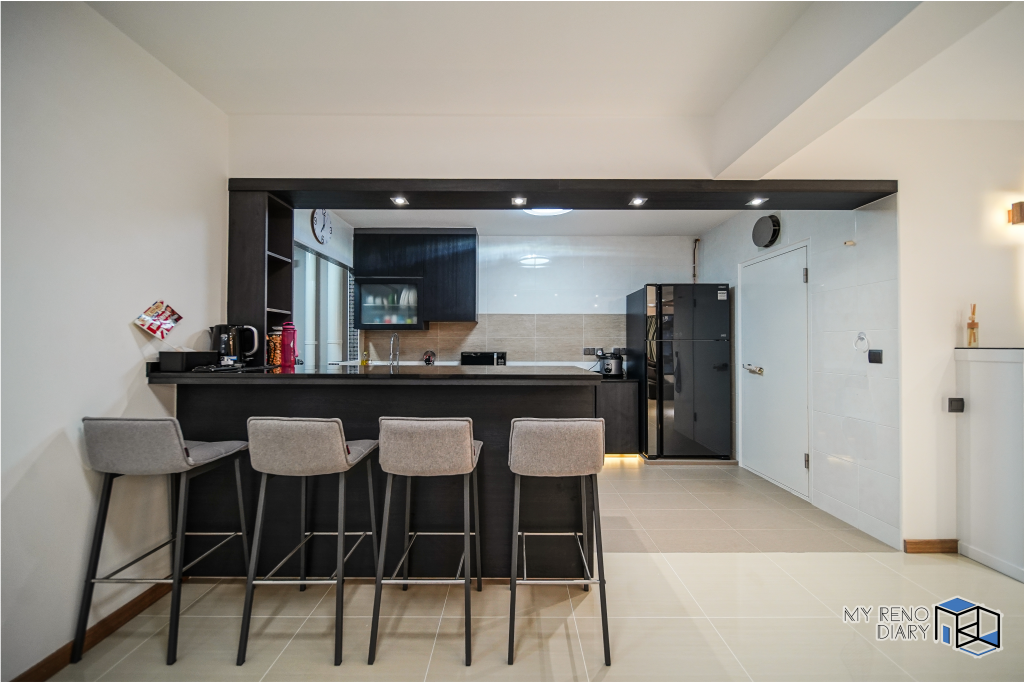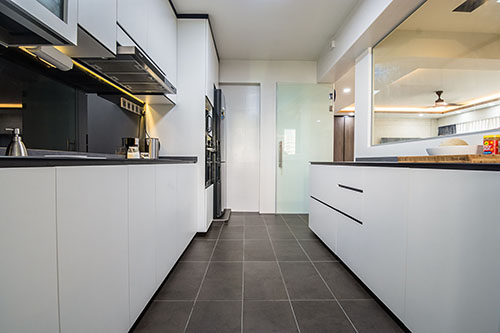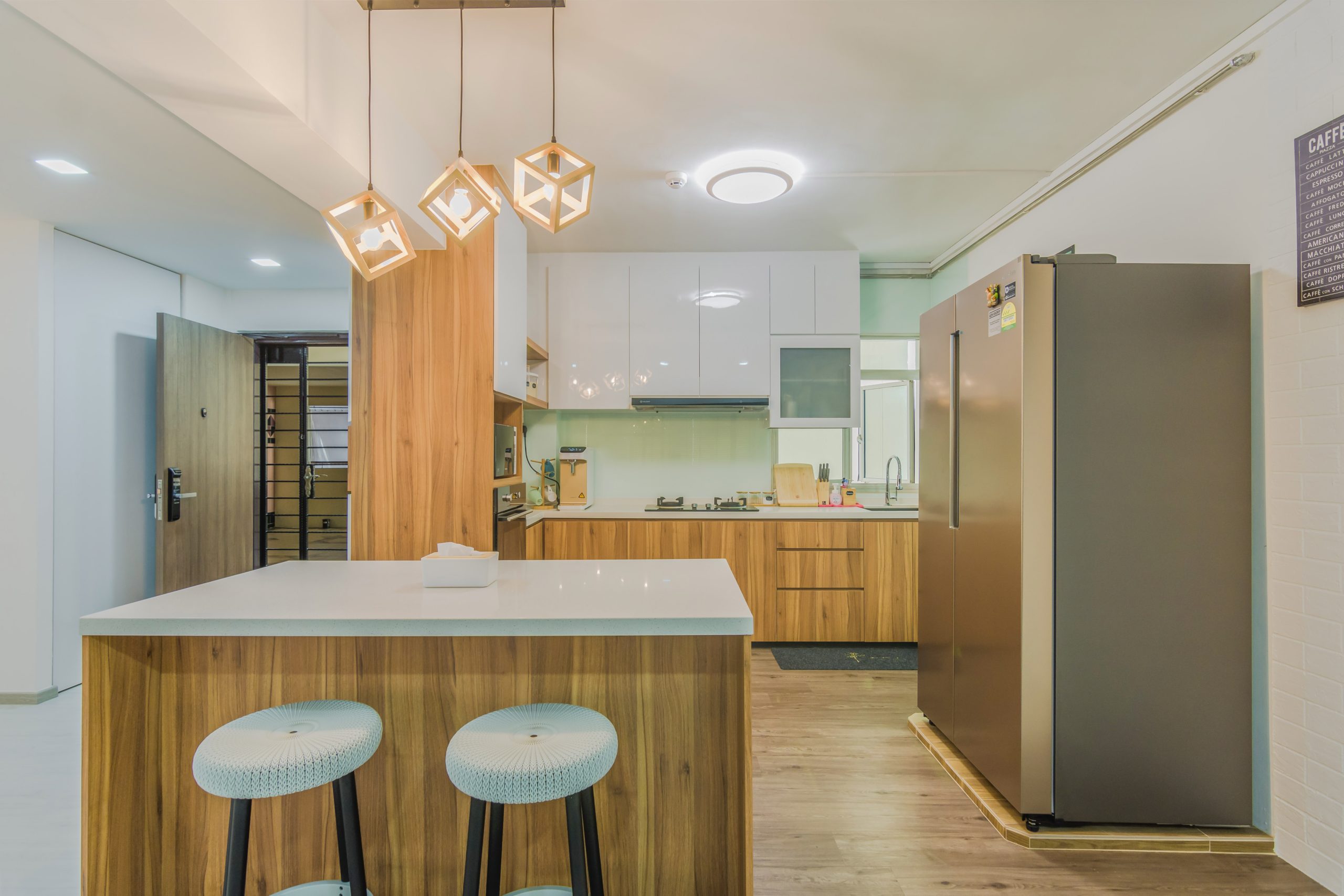The overall appearance of your kitchen is heavily influenced by your choice of kitchen door design and, no matter what stage of your kitchen remodeling process you’re at, one of your biggest decisions will be the materials you choose; a choice that can set the tone for the entire room.
Costs, quality and general durability can vary dramatically depending on which material you opt for, which is why we’re going to take a detailed at look at some common and uncommon kitchen door materials, weighing in on the pros and cons of each. Starting with more everyday options, we’ll be sharing some of our experience on how each choice might fit into your own, bespoke kitchen.

Spray Painted MDF
MDF is an extremely stable material, and the best material for spray painting where the result is a smooth, untextured finish. Paint can be colour matched to any colour (Farrow and Ball, Little Greene etc) so the colour options are limitless, and a huge variety of handle designs can be routed in the door before painting.
Painted doors are not as hard wearing as some other options, but doors can be re-sprayed if damaged.
Furniture Linoleum
Desktop Furniture Lino – made by Forbo – is a beautiful and sustainable product made from linseed oil and pine rosin, with a delicate tactile finish and a warm fine texture. It’s easy to work with, durable, easy to keep clean, and doesn’t show finger prints. Typically, we bond the linoleum to birch plywood doors and drawer fronts, lacquering the exposed plywood edges. Sometimes we will lip the substrate with solid timber and bond the lino over that to leave solid wood exposed edges.
Laminate faced birch ply
Similarly to wood veneer, laminate doors largely consist of an MDF or chipboard base onto which a patterned sheet of paper is heat-bonded using tough resin adhesives. These doors can have patterns that are convincing imitations of wood or, indeed, any other design and since laminate is so easy to clean, it makes a great material for kitchen doors.
Laminates (sheet plastics such as Formica or Fenix) come in a huge range of colours and effects, and are extremely hard wearing. It can be a great choice for a durable door front, and the birch ply edge gives the finished door a hint of natural wood, which complements the laminate beautifully.

Wood Veneer
We use veneered doors in lots of our kitchens. It’s a great way to get a modern look with a natural product. As mentioned above, solid wood isn’t suitable for making flat doors, so this is where veneer comes in. Veneered panels are made by laminating a thin layer (usually 0.6mm) of real wood onto a stable substrate (usually MDF or birch ply).
If you use MDF as the substrate then each door has to be lipped and veneered. This means a thin piece of solid wood (usually around 5mm) is glued to the edge of the doors, after which the faces of the doors are veneered. The result is a door that looks like it’s been made from solid wood.
We use birch plywood more often than MDF because we love the way the birch ply edge looks, but there are often parts of the kitchen that will need to be lipped and veneered.
Solid wood
We use solid wood to make doors and frames in our traditional in-frame shaker kitchens. We typically use maple which is very dense and stable, and has a close grain making it perfect for painting. As our shaker kitchens are almost always hand-painted they can be re-painted or touched up over the years, meaning a well-built in-frame shaker kitchen can last practically forever!
Shaker kitchens have what are called 5-piece panelled doors (doors constructed from 2 rails, 2 styles and a recessed panel in the middle). This construction mitigates the tendency of solid wood to expand, contract and twist, and helps keep the door stable.

Glass door
Kitchen glass door are a stylish option because they look modern and elegant, and they will go with any type of décor. They are ideal for smaller kitchens because they help bring light into the room, resulting in a space that looks and feels much bigger that its actual square footage.
There are several types of kitchen glass door. One of the common options is clear glass. Simple and straightforward, clear glass goes with any style of kitchen décor. And of course, the major advantage of clear glass cabinet doors is that you can see exactly what you’ve got in your cupboards – which means all your utensils, pans and ingredients are within easy reach. Clear glass panels in your kitchen doors are also perfect if you have some beautiful crockery that you’re keen to display. Clear glass may not be suitable for all your kitchen cabinets, however – we doubt you’ll want to display things like cleaning products, for example!
This leads nicely on to the next option: opaque glass. Opaque glass comes in a variety of styles, such as frosted glass or stained glass. Opaque glass is a great compromise – you get the clean, brightening effect of glass but the contents of your cabinets are obscured by frosting or colour. There’s a range of designs of frosted and stained glass, which means you have plenty of choice and won’t have any trouble finding a kitchen glass door style you love.
Every door material on the market comes in an almost infinite range of qualities and prices, so it‘s always a good idea to get the help of a trusted professional who can tell you the best products to suit your unique needs and budget. If possible, get your hands on the material to judge it for yourself and give yourself a clearer idea on how it might be to handle over the day to day life of your kitchen.

You can consult with My Reno Diary to finalise the perfect kitchen door in Singapore.
We offer you a wide variety of kitchen door in Singapore to select from, also with some helpful insight on how best you can install kitchen door wherever you want to have them. We also do our best to ensure the prices are affordable. If you want to place order kitchen door in Singapore, you can reach us to explain your need as you could have some special requirements for your kitchen door installation in Singapore.



